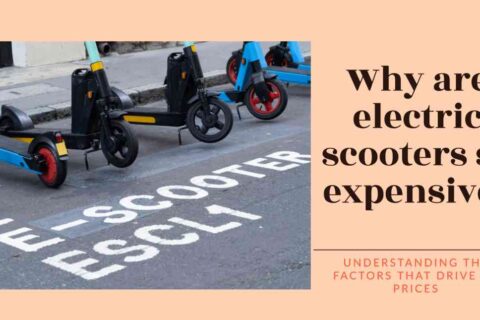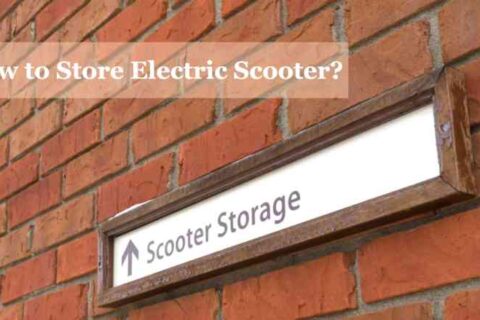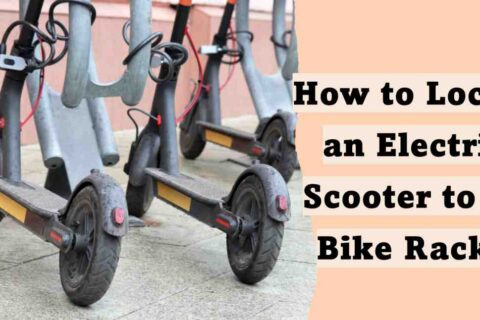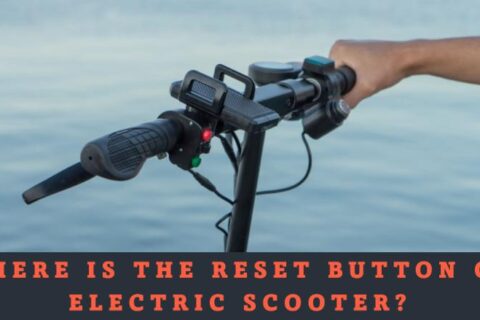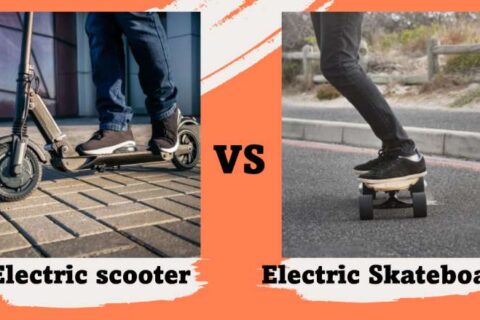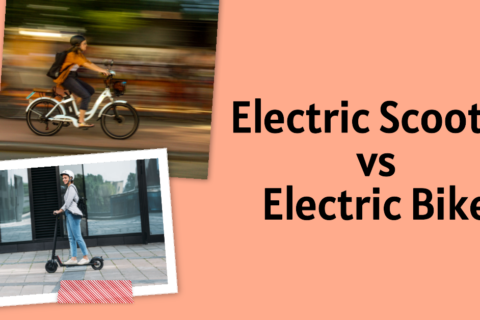Just admit it, problems with electric scooters are very common as we face almost every rider. Electric scooters offer a convenient and eco-friendly mode of transportation and by solving common problems with electric scooters, you are assured of a smooth and enjoyable riding experience.
Remember, maintenance and troubleshooting are part of the journey, and embracing them will enhance your overall satisfaction as an electric scooter owner.
This comprehensive article aims to delve into some of the most common problems with electric scooters which owners face and provide practical and efficient solutions to overcome them.
Table of Contents
ToggleProblems with electric scooters and solutions
Let’s look at the main reasons for the problems with electric scooters and look for the best troubleshooting of those.
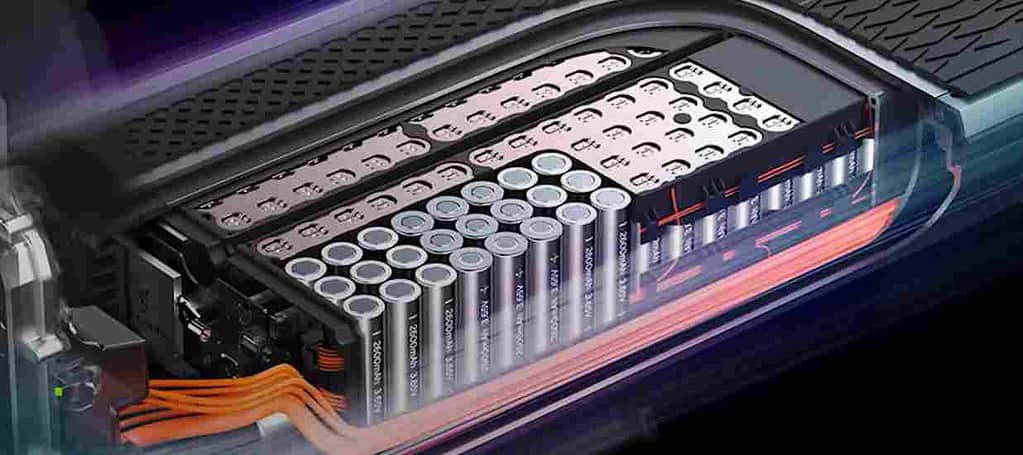
Photo Credit: Trend Max
Battery problems
Battery dies
Let us picture this, You’re scooting down the street, feeling the wind in your hair, and suddenly, the scooter comes to an abrupt halt. It’s a big buzz, but don’t be afraid! we will drive into the reasons behind this problem and explore practical solutions to keep your scooter running.
Reasons:
- Exceeding Recommended Mileage Limits:
Electric scooters come with a recommended mileage limit, usually around 15 to 20 miles per charge, of course depending on the Brands.
When you exceed this limit, you are pushing the battery beyond its intended capacity, which causes the battery to drain. It is essential to respect the manufacturer’s guidelines to maintain optimal battery performance. - Irregular charging habits:
As with any electronic device, electric scooters require regular charging to keep the battery healthy. If you are inconsistent with charging or allow the battery to fully discharge frequently, it can lead to premature battery depletion.
Solutions:
- Monitor battery level regularly:
To avoid being stuck with a dead battery, make a habit of checking your battery level before every ride.
Most electric scooters have a built-in battery indicator that shows the remaining charge. By regularly monitoring battery levels, you can estimate how much juice you have left and plan your rides accordingly. - Using a voltmeter to check battery charging:
Sometimes, you may encounter a situation where your scooter seems to be charging, but the battery does not reach its full capacity.
In such cases, using a voltmeter can be useful. A voltmeter measures the battery’s voltage and provides insight into its charging status. you don’t have to do it regularly, only check if you have confusion or check in once in a couple of months. - Swapping out old batteries and recycling them:
If you’ve had your electric scooter for a long time, it’s normal for the battery to degrade over time. When you notice a significant decrease in battery life and range, it may be time to consider a battery replacement.
Many scooter manufacturers offer replacement batteries that are compatible with their models. By installing a new battery, you can restore your scooter’s power and enjoy extended rides again.
Related Post:
It is important to dispose of old batteries responsibly. Check with local recycling centers or battery drop-off locations for proper recycling methods.

Overheating problem
Engine heats up
Now, let’s talk about a hot topic in the electric scooter world – overheating. Like any other mechanical device, electric scooter engines can get hot, causing discomfort and potential performance issues.
Reasons:
- Excessive current draw:
When your scooter draws excessive current, it stresses the electrical system and can cause overheating. Factors such as riding uphill for an extended period of time, carrying heavy loads, or riding at high speeds continuously may contribute to excessive current draw. - Faulty wiring or electrical system:
Faulty wiring or electrical components can disrupt the proper flow of electricity, thereby generating heat in the engine. Loose connections, damaged cables, or faulty components like controllers can hinder the smooth operation of your scooter and cause overheating. - Hot environmental conditions:
Riding in scorching hot weather can put extra stress on the engine, causing it to overheat more quickly. When ambient temperatures are high, the scooter’s cooling mechanisms can struggle to dissipate heat effectively.
Solution:
- Checking the battery temperature:
The battery is a significant contributor to the overall heat generated in an electric scooter. Monitoring the battery temperature during and after a ride can give you valuable insight into potential overheating problems with electric scooters.
If you notice that the battery is overheating, this may be an indication of an underlying problem that needs attention - Unblocking the air vents:
Most electric scooters are designed with air vents or cooling channels to facilitate heat dissipation.
Over time, these vents can get clogged with dirt, debris or even stickers. Regular inspection and cleaning of the air vents ensure proper airflow and help prevent engine overheating. - Cooling Fan Replacement:
The cooling fan plays an important role in controlling the temperature of the electric scooter engine. If the fan is not working properly or has worn blades, it may not provide sufficient airflow to cool the engine.
In such a case, replacing the cooling fan can help restore optimal cooling performance. - Inspection and repair of wiring and electrical system:
Conduct a thorough inspection of the scooter’s wiring and electrical components. Look for signs of damage, loose connections, or faulty parts that may be contributing to overheating.
Repair or replace defective components to ensure a stable electrical system and prevent excessive heat build-up. - Avoid riding in extremely hot environments:
It may be tempting to take your scooter out for a spin on a scorching summer day, but it is recommended to avoid prolonged rides in extremely hot environments.
Riding in the cooler part of the day or choosing a shaded route can reduce the risk of overheating and help your scooter run smoother.
Kill switch activation
If you are traveling along, enjoying your ride and suddenly, your scooter comes to an unexpected stop. It could be following problems with electric scooters.
Reasons:
- Short Circuit:
A short circuit occurs when the electric current takes an unintended path due to damaged or crossed wires. This can trigger the kill switch and cause your scooter to suddenly stop. - Throttle fault:
Faulty throttle mechanism can also kill switch activation. Issues such as faulty signals, damage, or faulty sensors can send the wrong signal to the scooter’s system, causing an unintended shutdown. - Battery Overheating Protection:
Electric scooters are equipped with protection systems to prevent the battery from overheating. In some cases, when the temperature of the battery increases to a certain threshold, the kill switch is activated as a safety precaution.
Solution:
- Checking the wiring for damage and short circuit:
Inspect your scooter’s wiring harness regularly for any signs of damage, wear, or loose connections.
Pay special attention to areas where cables may rub against sharp edges or where they come into contact with the elements. Correct any problems quickly to prevent short circuits and kill switch activation. - Repair or replace defective throttle:
If you suspect that the throttle is causing the kill switch to activate, it is essential to evaluate its condition.
Check for any physical damage, inconsistencies, or signs of wear. Depending on the severity of the problem, you may need to have the throttle repaired or replaced to restore normal scooter operation. - Ensuring proper ventilation to prevent battery overheating:
To reduce the possibility of the kill switch activating due to battery overheating protection, ensure that your scooter battery has proper ventilation.
Avoid covering the battery with bags or other objects that could restrict airflow. Maintaining good airflow around the battery helps dissipate heat and reduces the chance of a sudden shutdown.

Photo Credit: Trend Max
Tire Maintenance
Let’s dive into an essential aspect of electric scooter care – tire maintenance.
Flat tire
Nothing puts a damper on your ride like a flat tire. It is important to understand the reasons behind flat tires and how to deal with them effectively.
Reasons:
- Puncture by sharp objects:
Nails, glass shards or other sharp objects on the road can puncture your scooter’s tires, leading to a flat. Avoiding debris-filled areas can help reduce the risk, but sometimes, it’s unavoidable. - Low air pressure:
Insufficient air pressure in your tires can make them susceptible to damage and increase the chance of a flat tire.
Over time, tires naturally lose air and require regular maintenance to maintain optimal pressure.
Solution:
- Removing sharp objects from tires:
If you notice a puncture in your tire, the first step is to carefully remove the object that caused the flat. Look closely at the tire and locate the puncture point. Remove the object gently to prevent further damage. - Valve Leak Repair or Replacement:
In some cases, a flat tire can be caused by a leaking valve. Check the valve stem for any signs of leakage such as a hissing sound or visible air bubbles when applying soapy water.
If the valve is defective, you will need to repair or replace it to ensure a proper seal. - Inflating tires to recommended pressure:
Check the air pressure in your scooter tires regularly and inflate them to the manufacturer’s recommended pressure.
A tire pressure gauge can help you measure air pressure accurately. Adequate inflation not only prevents flats but also ensures optimal traction and handling. - Replacing damaged tires if necessary:
If your tire has sustained significant damage or the puncture is beyond repair, you may need to replace the entire tire.
This is especially true if the tire has tread or sidewall damage. Prioritizing safety and replacing damaged tires quickly is crucial.
Tire tread wear
The condition of your tire treads directly affects the performance and safety of your scooter. Let’s take a closer look at tire tread wear and how to deal with it.
Reasons:
- Regular use and friction:
When you ride your scooter, the tires experience constant contact with the road surface. Over time, this friction causes the tire tread to gradually wear down.
Solution:
- Regularly Inspect Tire Tread Depth:
It is essential to monitor the tread depth of your scooter tires. Using a tread depth gauge or visually checking the tire pattern can help determine if the tread is thin.
Make sure tire tread depth meets legal requirements in your area. - Tire replacement when the tread is worn:
When the tire tread reaches the recommended minimum depth or is significantly worn, it is time to replace the tire.
Worn-out treads reduce traction and increase the risk of accidents, especially on wet or slippery surfaces.
Investing in new tires ensures optimal grip and maintains the maneuverability of your scooter.
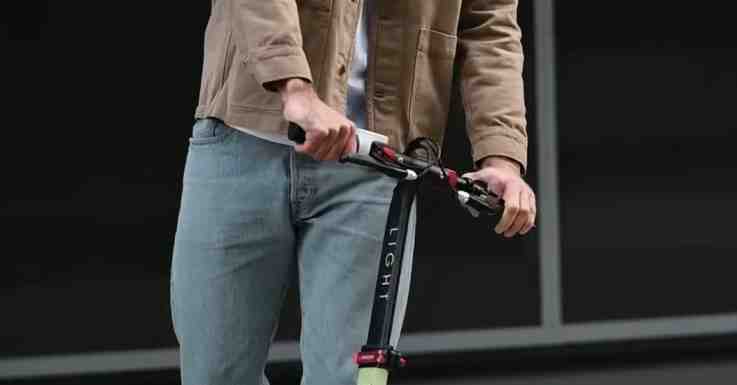
Photo Credit: Trend Max
Braking Problems
Maintaining reliable brakes is crucial for your safety when riding an electric scooter. In this section, we’ll explore common braking problems with electric scooters that scooter owners may encounter and provide effective solutions to ensure your brakes are in optimal working condition.
Brake problem
When it comes to brakes, any malfunction can be a cause for concern. Let’s take a look at the common causes of brake problems with electric scooters and how you can deal with them
Reasons:
- Defective brakes:
Over time, brakes can wear out, leading to malfunctions. This can be due to factors such as wire damage, misalignment or general wear and tear on the braking system. Addressing these issues immediately is essential to maintaining reliable stopping power. - Worn-out brake pads:
Brake pads are designed to gradually wear down with use. However, if they are worn excessively, they can compromise braking performance and effectiveness.
Regular inspection and replacement of worn-out brake pads is required to ensure optimal braking performance. - Inadequate Brake Fluid:
Brake fluid plays a vital role in the braking system, providing hydraulic pressure for effective braking. Inadequate fluid levels or leaks may result in reduced braking capability.
It is important to regularly monitor the brake fluid reservoir and fix any leaks or fluid level problems with electric scooters.
Solution:
- Checking the brake cable for damage:
Inspect the brake cable for any signs of damage such as fraying or kinks. A damaged cable can affect the ability to properly engage the brakes.
If you notice a problem, consider replacing the cable or seeking professional assistance. Ensuring a smooth and functional brake cable will increase braking performance. - Inspecting the brake fluid reservoir for leaks:
Regularly check the brake fluid reservoir for any signs of leakage. If you notice a drop in the fluid level or a visible leak, it is important to address the problem immediately.
Consult your scooter’s manual for instructions on how to check and add brake fluid, or have a professional technician help you. Maintaining the correct brake fluid level is essential for reliable braking. - Pumping the brake lever to check function:
Before setting off on a ride, it is a good practice to pump the brake lever a few times to ensure proper function. This action helps build pressure in the system and ensures the brakes engage smoothly.
If you notice any sponginess or lack of response, this may indicate air in the brake lines, which requires bleeding the brakes or seeking professional help. - Professional Repairs If Needed:
If you are experiencing persistent brake problems with electric scooters or suspect a more significant problem with your braking system, it is recommended to consult a professional technician.
Professional help is especially important for tasks like adjusting brake calipers or replacing hydraulic brake components.
Brake noise
Brake noise is an unwanted distraction and can be a sign of an underlying problem. Let’s explore common causes of brake noise and how you can mitigate them.
Reasons:
- Brake Pad Contamination:
Dust, debris or oil build-up on brake pads can cause noise during braking. Contaminated brake pads can create a squealing, grinding or scraping noise. Addressing this problem will not only reduce noise but also improve braking performance. - Worn brake pads:
As the brake pads wear down, the metal backing plate can come in contact with the rotor, causing noise.
This sound is typically a high-pitched squeaking or squealing sound. Regular inspection and timely replacement of worn brake pads will help to maintain smooth and noise-free braking.
Solution:
- Cleaning of brake pads and rotor surfaces:
Clean brake pads and rotor surfaces regularly to remove any debris or contaminants. Use a clean cloth or a special cleaner.
Cleaner to ensure optimum contact between pad and rotor. Brake system cleaning will help reduce noise and maintain proper braking performance. - Replacing worn brake pads:
If your brake pads have reached their wear limit or are making constant noise, it’s time to replace them.
Refer to your scooter’s manual or consult a professional technician for specific instructions on replacing brake pads.
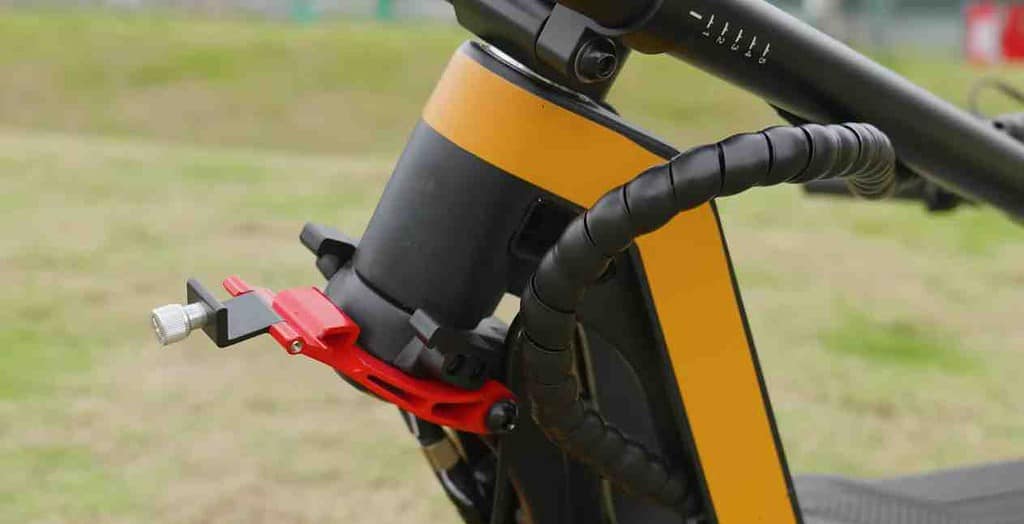
Photo Credit: gizmochina
Electrical system problems
As an electric scooter owner, it’s important to be aware of common electrical system issues. Lets explore two common problems with electric scooters—power loss and lights not working—and offer practical solutions to get your scooter back in top shape.
A. Power loss
A sudden loss of power can be frustrating and interrupt your riding experience.
Reasons:
- Loose or disconnected cables:
Vibration and regular use can cause cable connections to become loose or disconnected. When this happens, the flow of electrical current to the various components is interrupted, resulting in a loss of power. - Faulty electrical connections:
Over time, electrical connections can deteriorate, causing poor conductivity and loss of power. Corrosion, oxidation, or wear on connectors and terminals can prevent the proper flow of electricity.
Solution:
- Checking and securing all wiring connections:
Begin by visually inspecting all wiring connections throughout your scooter. Check for any loose or disconnected wires and securely reconnect.
Make sure the connections are snug and free from dirt or debris. By fixing loose connections, you can restore the proper flow of electricity and solve power loss problems with electric scooters. - Repair or replace defective electrical components:
If you have checked the wiring connections and the power loss continues, it is possible that you have a defective electrical component. In such cases, it is better to seek professional assistance or consult the manufacturer’s guidelines.
The lights are not working
Proper lighting is essential to your safety, especially when riding in low-light conditions. If you find that your scooter’s lights are not working properly, consider the following causes and solutions.
Reasons:
- blown fuse:
A fuse is a protective device that prevents electrical overload in a particular circuit. If a fuse blows, it can interrupt the flow of electricity to the lights, causing them to stop working. - Faulty switch or wiring:
A switch or wiring problems with electric scooters may cause the lights to not work. Faulty switches can fail to complete electrical circuits, while damaged wires can disrupt the flow of electricity to lights.
Solution:
- Inspecting and replacing blown fuses:
Begin by locating the fuse box on your scooter. Check the fuses associated with the lights and identify any blown – ones with a broken filament inside Replace the blown fuse with a new one of the same rating. - Checking switches and cables for defects:
Carefully inspect the switches responsible for controlling the light Look for any signs of damage, like loose connections or worn-out components.
In addition, check the wiring connected to the lights to make sure there are no visible faults or breaks. If you detect a problem, consider repairing or replacing the defective switch or wiring to restore proper lighting function. - Replace defective components as necessary:
If the troubleshooting steps do not resolve the light malfunction, consult a professional technician or refer to the manufacturer’s manual. They can provide expert guidance and help identify and replace any faulty components related to lighting systems.
Final Thoughts
Throughout the article, we have explored a number of key areas where electric scooter owners commonly encounter issues. We discussed battery problems, overheating concerns, tire maintenance, braking problems, electrical system problems with electric scooters and more.
For each issue, we have explored the reasons behind them and provided practical solutions to address and overcome these challenges.
Regularly inspect your electric scooter, paying attention to the areas we discuss in this article. Implement recommended maintenance practices and troubleshooting steps.
Remember, don’t hesitate to seek professional help if you encounter more complex Problems with electric scooters or feel unsure about a repair method.
Frequently Ask Questions (FAQ)
What problems do electric scooters solve?
Electric scooters address issues such as congestion, pollution, high transport costs, and parking challenges and provide last-mile connectivity. They offer a cost-effective, eco-friendly and convenient transport option for shorter commutes while promoting healthy lifestyles and reducing environmental impact.
How safe are electric scooters?
Riders should wear helmets, follow traffic rules, and be aware of their surroundings. However, accidents can still happen due to factors such as rider error, road conditions, or interactions with other vehicles.
Are electric scooters bad for the environment?
Electric scooters are generally considered to be environmentally friendly. They produce zero direct emissions and greenhouse gas emissions. However, their overall environmental impact depends on factors such as the electricity source used for charging.
Are electric scooters safe in the rain?
Electric scooters can be less safe in the rain because of slippery surfaces and reduced visibility. Wet conditions increase the risk of skidding and crashes. It is recommended to exercise caution, ride at low speeds, maintain a safe distance and use proper rain gear.



